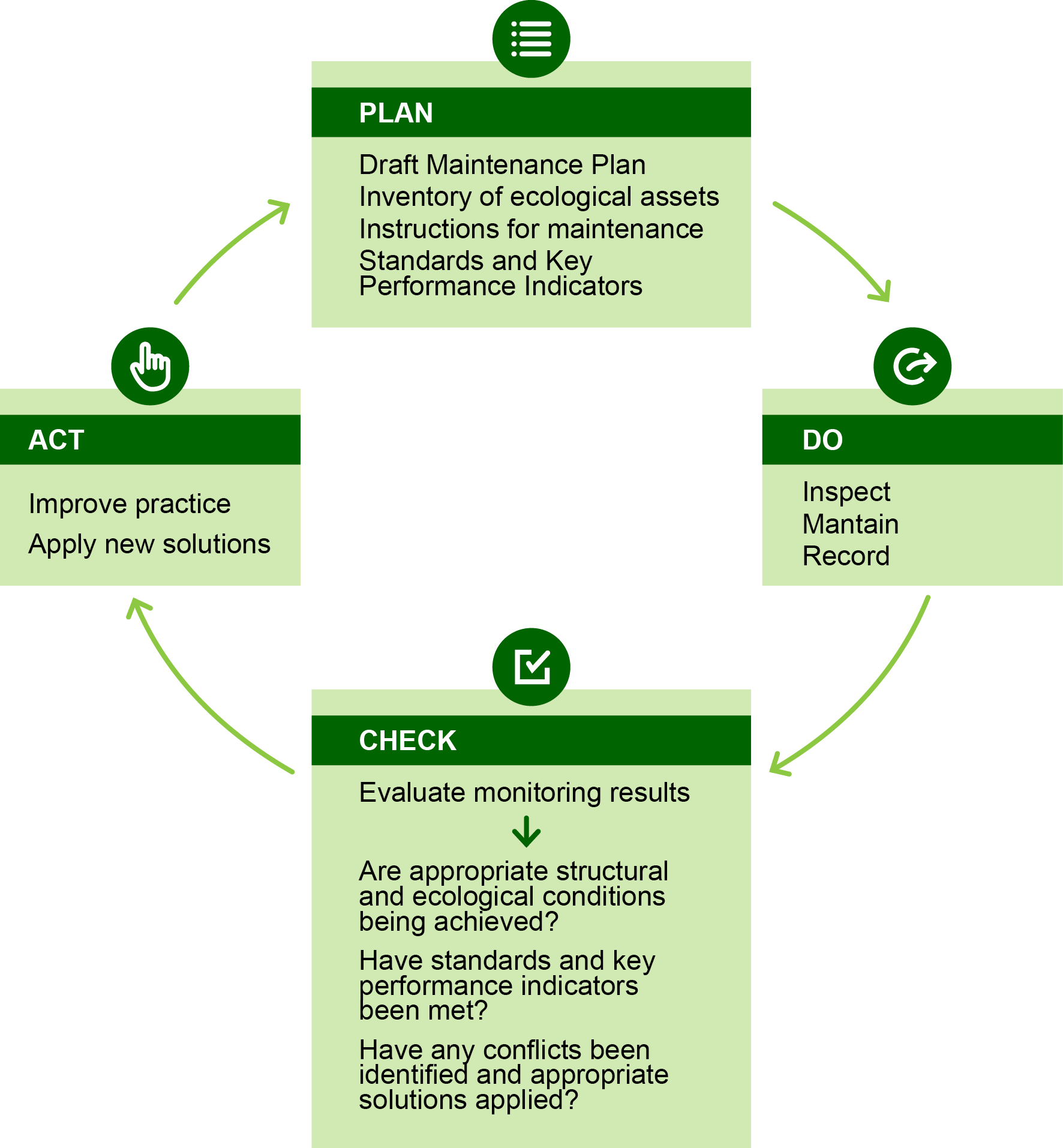A process in the infrastructure life-cycle
Harmonising biodiversity and transport infrastructure is a process that begins in the planning phase and must be delivered by the appropriate construction and maintenance of ecological assets (see Chapter 2 – Policy, strategy and planning). The necessary requirements for each ecological asset to facilitate maintenance through all life-cycle phases are listed in Table 7.2.
To neglect maintenance aspects in infrastructure design and construction may compromise the functionality of ecological mitigation during the operation phase and increase hazards to traffic safety. It may also lead to damage to protected species and sites.
Table 7.2 – Maintenance needs to be attended along the whole infrastructure life-cycle.
| INFRASTRUCTURE LIFE-CYCLE PHASE Requirements to facilitate appropriate maintenance and guarantee long-term performance of each ecological asset |
| Design |
| – Appropriately adapted to site conditions. – Appropriately designed according to target species and habitat requirements. – Duly inventoried and included in a database with description, location, standard conditions envisaged and key performance indicators. – Provided with technical instructions for maintenance. |
| Construction |
| – Correctly constructed and installed according to the plan, or adapted to new constraints or site conditions. – Made of durable, sustainable materials. – Constructed and installed in a way that allows efficient maintenance at reasonable cost. |
| Operation & Maintenance |
| – Undertake inspection, maintenance and monitoring. – Adapt maintenance to variation in conditions and recorded results. – Disseminate knowledge and ‘lessons learned’ to improve future ecological asset design, construction and maintenance. |
Continuous improvement of maintenance practice
Successful maintenance strategies for ecological assets should be developed following a PDCA (Plan-Do-Check-Act) approach (Figure 7.2.1).
To apply this adaptive strategy approach in ecological asset maintenance is particularly important due to temporal variation in species and ecosystems and increasing extreme events related to climate change.
Scope and aspects to be included in tenders and contracts
The scope of ecological asset maintenance plans depends on each situation and conditions. It could refer to:
- A whole regional or national transportation infrastructure network (it should be included in general maintenance guidelines).
- A single infrastructure.
- A single asset (such as a large landscape overpass or a pond managed to enhance wildlife).
Operation and maintenance contracts are key tools to guarantee good practice. A detailed description of ecological asset maintenance SMART objectives (Specific, Measurable, Achievable, Relevant and Time-bound), standards and Key Performance Indicators (KPI) along with inclusion of suitable ecological capability within the maintenance team are requirements that should significantly improve practice. PPP (Public Private Partnership) operation and management contracts are particularly important because they are in force for long periods (decades). To establish objectives, standards and KPIs to be achieved are better than focusing on a description of tasks to be undertaken, because tasks may need to be adapted to potential new conditions.
